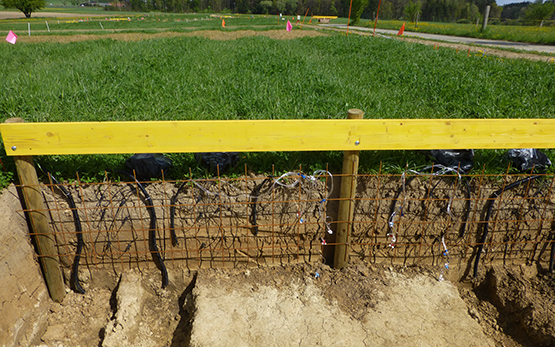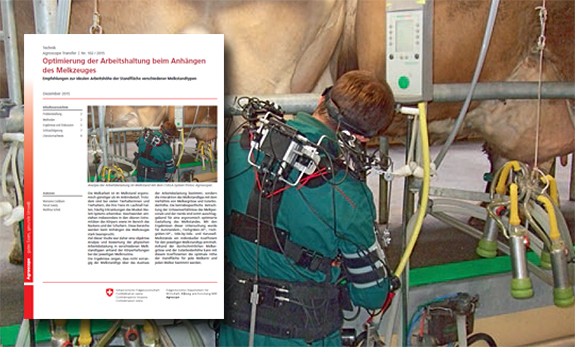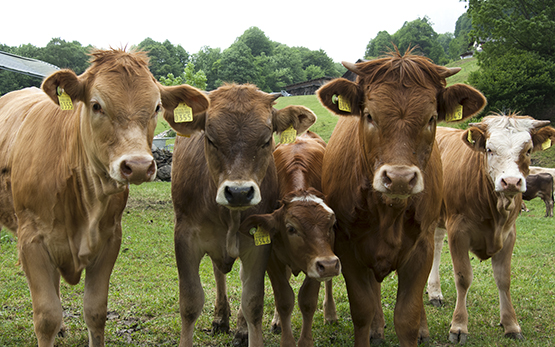Gazzarin C.
Grundfutter wirtschaftlich betrachtet: Grundfutteranteil und Milchleistungsniveau in einer Vollkostenbetrachtung.
Dans: Strickhof Milch-Tag. 27. Januar, Ed. Strickhof, Lindau. 2023, 1-22.
Gazzarin C.
Wirtschaftliche und standortangepasste Mutterkuhhaltung.
Dans: Fleischrindersymposium. 19. Januar, Ed. Plantahof, Landquart. 2023, 1-38.
Gazzarin C., Blättler T., Bütler A., Durgiai B., Schmid D.
Bergmilchproduktion mit Zweinutzungskühen – alter Zopf oder wieder rentabel?
Agrarforschung Schweiz, 13, 2022, 190-197.
Kozak O., Renner S., Jan P., Gazzarin C.
World dairy market: Challenges and opportunities: Main findings of the 23rd IFCN Dairy Conference 2022.
Agroscope Science, 140, 2022, 1-5.
Gazzarin C.
Rindfleisch aus Gras: Welche Strategien sind wirtschaftlich?
Dans: Agrarökonomie-Tagung. 04. Oktober, Tänikon, Ettenhausen, Agroscope. 2022.
Gazzarin C.
Wirtschaftliche und standortangepasste Mutterkuhhaltung.
Dans: Beef.ch. 24. Juni, Strickhof Wülflingen. 2022.
Gazzarin C.
Erste Ergebnisse zur Wirtschaftlichkeit von Mutterkuhhaltungssystemen.
Dans: Zentralschweizer Regionaltagung Mutterkuh Schweiz. 7. Mai, Ed. Mutterkuh Schweiz, Arenenberg und Strickhof, Willerswil. 2022.
Gazzarin C., Bütler A., Anken T., Bravin E., Hoop D., Sax M., Schlatter M., Zorn A.
Catalogue des coûts 2022 : Valeurs indicatives des coûts de machines, du travail, des bâtiments et de la mécanisation intérieure. Valable jusqu’en septembre 2023.
Agroscope Transfer, 448, 2022, 1-56.
autres langues: allemand
Gazzarin C., Jan P.
Wirtschaftlich optimale Produktionssysteme in der Mutterkuhhaltung: Eine ökonomische Analyse basierend auf 42 Mutterkuhbetrieben im Tal- und Berggebiet.
Agroscope Science, 138, 2022, 1-34.
Gazzarin C.
Optimierte Produktionssysteme in der Mutterschafhaltung – Produktivität als Schlüssel zum Erfolg.
Dans: Wirtschaftlichkeit von Mutterschafen - Optimierte Produktionssysteme. 10. Mai, Agridea. 2022, 1-38.
Gazzarin C.
Systèmes de production rentables en production ovine.
Dans: Systèmes de production rentables en production ovine. 26.11., Villarepos - Proconseil Lausanne (Prometerre). 2021.
Schlebusch S., Gazzarin C., Hoop D., von Rohr P.
Ecobreed: The economic value of a cow as a selection criterion.
Dans: EAAP. 02.09., Davos. 2021.
Gazzarin C.
Quels niveaux d’indemnisation?
Technique Agricole, 12, 2021, 42-44.
autres langues: allemand
Gazzarin C.
Indemnités à demander pour les travaux de déneigement : Valable jusqu’en septembre 2022.
Ed. Agroscope, 03 septembre, 2021
autres langues: allemand
Gazzarin C., Häller B., Hofstetter P.
Economic potential of milk production strategies with restrictive use of concentrated feed: An experiment on 36 family farms in the pre-alpine region.
Grassland Science, 67, (4), 2021, 343-351.
Gazzarin C., Hoop D.
Was kostet das Tierwohl?
Dans: Agrarökonomie-Tagung. 5. Oktober, Ed. Agroscope, Tänikon. 2021, 1-27.
Gazzarin C.
Coûts-machines 2021 : Valable jusqu’en septembre 2022.
Agroscope Transfer, 408, 2021, 1-52.
autres langues: allemand
Scriba M.F., Keil N., Zanolari P., Gazzarin C.
Evaluation du bien-être et de la rentabilité dans l’engraissement des agneaux et des cabris.
forum, 6/7, 2021, 0-11.
autres langues: allemand
Gazzarin C., Meier L., Zimmert F.
Rentabilité des exploitations d’engraissement de bovins et de porcs appliquant des normes plus strictes en matière de bien-être animal : Les coûts supplémentaires sont-ils couverts ?
Agroscope Transfer, 399, 2021, 1-12.
autres langues: allemand
Gazzarin C., Zimmert F.
Was ist uns das Tierwohl wert?: Berechnungen aus der Schweiz.
Berichte über Landwirtschaft, 99, (1), 2021, 1-27.








